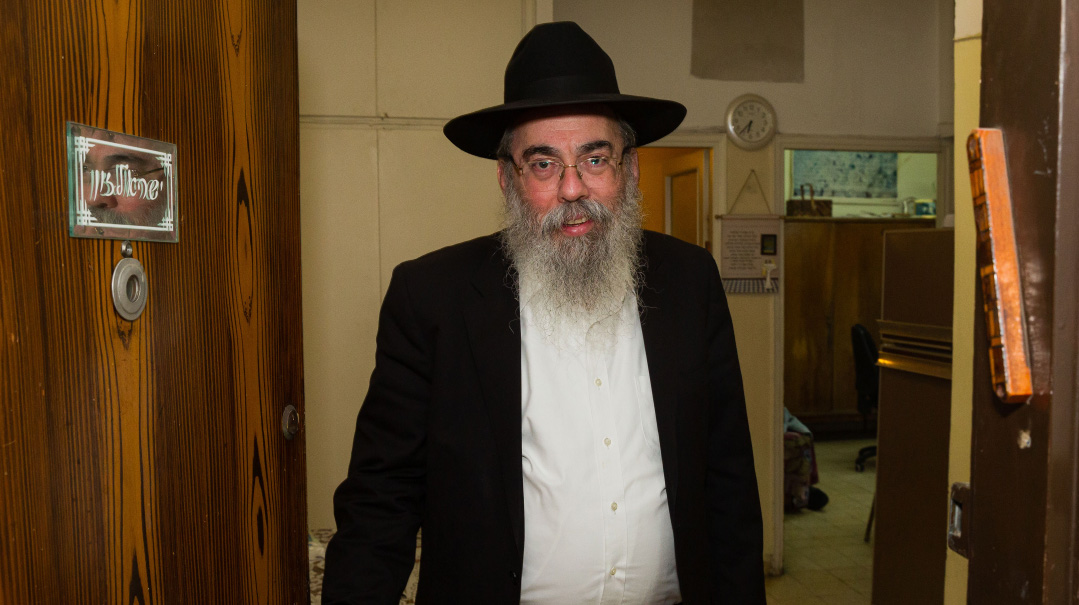Royal Blend
| March 26, 2024Rav Chaim and Rebbetzin Batsheva Kanievsky became the couple who served as a source of inspiration and solace to Klal Yisrael

Photos: Elchanan Kotler, Mishpacha archives
To my dear daughter Batsheva Esther tichyeh…
Mommy returned home yesterday; the ride was fine baruch Hashem. Since she promised to write to you as soon as she gets home, but today is Erev Shabbos and she is busy preparing Shabbos, I decided to write to you myself.
My dear daughter, I have heard… Know that you must live for yourself and not in order to find favor in the eyes of others, and not to care about what other people say. Having a humble spirit is a good middah and Chazal have said, “Always be very humble,” but I sense that you have reached a state in which you are experiencing a feeling of numbness, which is not how one should feel. The pasuk says, “If there is worry in a man’s heart, let him discuss it,” and Chazal interpret this as saying, “Let him discuss it with others.” Anything that accumulates in your heart, speak it over with your mother-in-law who is dedicated to your welfare, and you will feel relieved.
Your father who cares for you, Yosef Shalom
Send regards to your husband, my son-in-law, the gaon Rav Chaim shlita, and to my granddaughter shetichyeh…
With the second yahrtzeit of Rav Chaim Kanievsky ztz”l on Shushan Purim, many, many are still looking back longingly for what Am Yisrael lost. And although his wife predeceased him by more than a decade, his story is inextricably intertwined with Rebbetzin Batsheva Kanievsky, who was a source of chizuk for thousands of women and girls worldwide, all while serving as a loyal partner to her great husband.
But while many were privy to the tremendous, mutual caring and respect that existed between them, there was apparently an adjustment period at first. And this caring, fatherly letter penned by Rav Elyashiv to his daughter shortly after her marriage — unusual in its length for someone known for his brevity — alludes to this more complex picture.
We were directed to this letter by Rav Lipa Yisraelson — grandson of Rav Elyashiv, nephew of the Kanievskys, and author of many works preserving the Torah of these gedolim. Between its lines, says Rav Lipa, lies the key to understanding what shaped Rav Chaim Kanievsky into who he eventually became with his marriage and the blending of two Torah dynasties.
Rav Yitzchok Hutner would point out that gedolim stories and biographies are often misleading. We hear much of the prodigious abilities they displayed already from childhood, but we aren’t exposed to their challenges and how they overcame them, leaving us with little practical examples of growth that we can apply to our own lives. And we’re often left with little understanding of what or who shaped our leaders into the giants that they became.
When it comes to Rav Chaim Kanievsky, a once-in-a-generation phenomenon, whose combination of encyclopedic Torah knowledge and spiritual level amazed even his own father, the Steipler Gaon, and father-in-law, Rav Elyashiv, this lack of clarity is most apparent. Mystique and legend take the place of understanding how he grew to be who he did.
While many trace the roots of that greatness to one of a few primary influences, such as the Chazon Ish, his nephew Rav Lipa Yisraelson credits the two royal Torah dynasties that blended in marriage, the Kanievsky and Elyashiv families, with polishing the jewel that became Rav Chaim Kanievsky.
The Rebbetzin and her father, Rav Elyashiv, were partners in creating the Rav Chaim as we knew him.
Oops! We could not locate your form.







